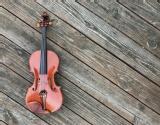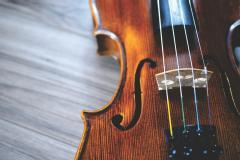The Carnatic violin is a classical Indian musical instrument that has become an integral part of the Carnatic music tradition of South India.
Advantages of learning Carnatic Violin:
- Musical Versatility: Learning Carnatic Violin equips you with a versatile instrument that can be used in solo performances, as well as in accompanying vocalists and other instrumentalists.
- Melodic Expression: The Carnatic Violin allows for rich melodic expression, enabling you to explore the intricacies of ragas and embellish the musical phrases with slides, glides, and ornamentations.
- Rhythmic Understanding: Playing the Carnatic Violin enhances your understanding of talas (rhythmic patterns) and helps develop a strong sense of rhythm.
- Improvisation: The violin lends itself to improvisation, allowing you to create variations and elaborate on the melodic aspects of the composition, showcasing your creativity and individuality.
- Ear Training: Learning Carnatic Violin improves your ear for music, as you develop the ability to recognize and reproduce intricate melodic patterns and nuances.
- Coordination and Dexterity: Playing the violin requires precise finger placement, bowing techniques, and coordination between both hands, which enhances fine motor skills and hand-eye coordination.
- Cultural Connection: Learning Carnatic Violin connects you to the rich cultural heritage of South Indian classical music and provides a deeper understanding of its traditions and compositions.
- Performance Opportunities: The Carnatic Violin opens doors to performance opportunities, both within the Carnatic music community and in fusion collaborations, allowing you to showcase your skills and share your musical expression with others.
- Personal Enrichment: Learning Carnatic Violin is a fulfilling journey of self-expression, musical growth, and personal satisfaction, providing a lifelong pursuit of learning and enjoyment.
Here's a brief history of the Carnatic violin:
The introduction of the violin to the Carnatic music tradition is attributed to the renowned Carnatic music composer and vocalist, Muthuswami Dikshitar (1775-1835), who was inspired by the Western violin during his visit to Varanasi in the early 19th century. Dikshitar saw the violin being played by Christian missionaries and was fascinated by its melodic capabilities.
Upon returning to his native region of South India, Dikshitar introduced the violin to the Carnatic music repertoire. He adapted the instrument to suit the unique characteristics of Indian classical music by modifying its playing technique and incorporating microtonal nuances that are prevalent in the Carnatic music system.
Dikshitar's disciple, Vadivelu, further developed and popularized the Carnatic violin. Vadivelu experimented with different modifications to the violin, such as adjusting the fingerboard and adding resonators, to achieve a distinct Carnatic sound. He also formulated the technique of playing slides and glides, known as "gamakas," which are essential to Carnatic music.
During the late 19th and early 20th centuries, prominent violinists such as Tirukkodikaval Krishna Iyer, Malaikottai Govindaswamy Pillai, and Dwaram Venkataswamy Naidu played significant roles in establishing the Carnatic violin as a prominent solo and accompanying instrument. They expanded the melodic possibilities of the instrument, developed its repertoire, and elevated its status within the Carnatic music tradition.
The Carnatic violin gained further recognition and popularity with the emergence of legendary violinists like T. Chowdiah, Lalgudi Jayaraman, M.S. Gopalakrishnan, and T.N. Krishnan in the mid-20th century. These virtuosos brought immense innovation to the instrument, pushing its technical boundaries, and enriching its musical expression. They incorporated intricate bowing techniques, complex rhythmic patterns, and expanded the melodic range of the violin.
Today, the Carnatic violin is an essential component of Carnatic music concerts, both as a solo instrument and as an accompaniment to vocalists and other instrumentalists. It has found a place not only in traditional Carnatic music but also in fusion collaborations with other genres, demonstrating its versatility and adaptability.
The Carnatic violin has evolved over time, blending the melodic and rhythmic intricacies of Indian classical music with the instrument's own unique tonal qualities. It continues to be a cherished instrument, captivating audiences with its soulful melodies and expressive capabilities.









